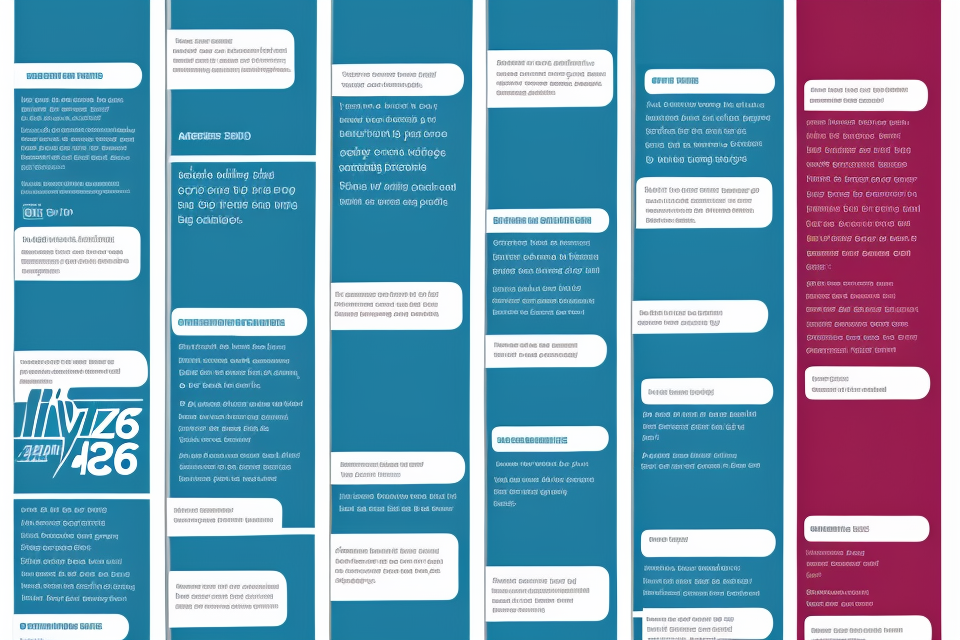
The question of whether a zip-up hoodie is considered a jacket has been a topic of debate among fashion enthusiasts for years. Some argue that a hoodie is not a jacket, as it lacks the typical features of a jacket such as a buttoned front and long sleeves. Others argue that a zip-up hoodie is indeed a jacket, as it provides warmth and protection from the elements in the same way that a traditional jacket does. So, what’s the verdict? Is a zip-up hoodie a jacket or just a sweatshirt with a hood? Let’s dive in and find out.
A zip-up hoodie is typically considered a type of sweatshirt or pullover rather than a jacket. While it may have a zipper and be able to be worn open like a jacket, it is typically made of thicker, warmer material and is designed to be worn as an outer layer when it is cold. A jacket, on the other hand, is typically a thinner, lighter-weight garment that is designed to be worn as an outer layer in milder weather. It usually has a button or zipper closure and is often made of materials such as leather or denim.
The Definition of a Jacket
The Common Characteristics of a Jacket
A jacket is a type of garment that is typically worn on the upper body. It is usually designed to be worn open, with a front opening that can be fastened using buttons, zippers, or other types of fasteners. The common characteristics of a jacket include:
- Closed front: A jacket typically has a closed front, which means that it is designed to be worn open over a shirt or other type of garment. This helps to keep the wearer warm and protects their clothing from getting dirty or wrinkled.
- Lapels: A lapel is a fold of fabric that is sewn onto the front of a jacket, typically on either side of the opening. Lapels can be made from a variety of materials, including wool, cotton, and synthetic fabrics. They can be short or long, and they can be notched or peaked.
- Sleeves with a seam or cuff: Jackets typically have sleeves that are sewn into the garment, rather than being attached with buttons or other types of fasteners. The sleeves may have a seam down the outside of the arm, or they may be cut in a more fitted style. Some jackets also have cuffs, which are a type of band that is sewn around the bottom of the sleeve.
- Buttons or zippers: Most jackets have some type of fastener on the front, which is used to close the garment. Buttons are a common type of fastener, and they are often made from a variety of materials, including plastic, wood, and metal. Zippers are another type of fastener that is commonly used on jackets, and they are typically made from a type of nylon or other synthetic material.
- Pockets: Many jackets have pockets on the front or on the sides, which are designed to hold small items such as keys, coins, or handkerchiefs. Pockets can be sewn into the garment or attached with snaps or other types of fasteners. Some jackets also have internal pockets, which are designed to hold larger items such as wallets or smartphones.
The Uncommon Characteristics of a Jacket
When discussing the characteristics of a jacket, it is important to note that not all jackets are created equal. While there are certain commonalities among jackets, such as a front opening and sleeves, there are also some uncommon characteristics that set them apart.
One of the most notable uncommon characteristics of a jacket is its fastening mechanism. A jacket typically has an opening at the front that is secured with a fastening mechanism, such as a zipper or buttons. This fastening mechanism is what sets a jacket apart from other types of outerwear, such as a sweater or a coat.
Another uncommon characteristic of a jacket is the presence of lapels. Lapels are the folded-back edges of the front of a jacket, and they can be found on some types of jackets, but not all. For example, a denim jacket may have lapels, while a leather moto jacket may not.
In addition to lapels, a jacket may also have long or short sleeves. This is another characteristic that sets jackets apart from other types of outerwear, as not all outerwear has sleeves.
Finally, pockets may or may not be present on a jacket. Some jackets have multiple pockets, while others have none at all. The presence or absence of pockets can also be a factor in determining whether an item of outerwear is a jacket or not.
The Definition of a Zip-Up Hoodie
The Common Characteristics of a Zip-Up Hoodie
A zip-up hoodie is a type of clothing that has become increasingly popular in recent years. It is typically made of a lightweight, breathable fabric such as cotton or fleece, and is designed to be worn as a layering piece or as a standalone outerwear garment.
The common characteristics of a zip-up hoodie include:
- Closed front: A zip-up hoodie typically has a closed front, with a full or partial zip that can be used to fasten the garment.
- Hood: A hood is a common feature of a zip-up hoodie, and is often made of the same material as the rest of the garment. The hood is designed to be worn up over the head and neck, and can be adjusted to fit different head sizes.
- Pockets: Many zip-up hoodies have pockets on the front, which are often designed to be deep enough to hold hands or other items. These pockets may be located on the chest or waist, depending on the style of the garment.
- Long sleeves: A zip-up hoodie typically has long sleeves, which are designed to cover the arms and provide warmth. Some zip-up hoodies may have ribbed cuffs to help keep the sleeves in place.
- May have a full or partial zip: A zip-up hoodie may have a full zip, which runs from the neck to the bottom of the garment, or a partial zip, which may only run partway down the front. The type of zip used can affect the overall look and function of the garment.
The Uncommon Characteristics of a Zip-Up Hoodie
While a zip-up hoodie may share some similarities with a jacket, it also has some unique features that distinguish it from traditional jackets.
Open at the front, with a full or partial zip
One of the most noticeable characteristics of a zip-up hoodie is that it is open at the front, with a full or partial zip. This zipper is typically made of metal or plastic and runs from the neckline to the bottom of the garment. The zip-up hoodie can be opened and closed by the wearer, making it easier to put on and take off.
May or may not have lapels
Unlike a traditional jacket, a zip-up hoodie may or may not have lapels. Lapels are the folded-over collars that are commonly found on jackets. If a zip-up hoodie has lapels, they are typically small and may be made of the same material as the rest of the garment. However, many zip-up hoodies are designed without lapels, giving them a more casual look.
Pockets may or may not be present
Another feature that distinguishes a zip-up hoodie from a jacket is the presence or absence of pockets. While some zip-up hoodies have pockets, either on the hips or the front, others do not have any pockets at all. The absence of pockets can make the zip-up hoodie more comfortable to wear, as there is no bulk or weight in the pockets.
Long sleeves are common, but short sleeves are also possible
Finally, while long sleeves are common on zip-up hoodies, short sleeves are also possible. This makes the garment more versatile, as it can be worn in a variety of settings and seasons. Short sleeves also make the zip-up hoodie more breathable, which can be beneficial in warmer weather.
Comparing Jackets and Zip-Up Hoodies
Physical Differences
While both jackets and zip-up hoodies are types of outerwear, there are several physical differences between the two. One of the most noticeable differences is the presence or absence of lapels on jackets. Lapels are the folded edges of fabric on either side of the collar that meet at the center button or zip. On the other hand, zip-up hoodies do not have lapels, as they have a straight edge at the collar.
Another physical difference between the two is the presence of a hood on zip-up hoodies. While jackets may have a small hood or collar that can be turned up to provide some protection from the elements, zip-up hoodies have a larger, more pronounced hood that can be zipped up to cover the head and neck. This hood is one of the defining features of a zip-up hoodie, and is often made of a different material than the rest of the garment for added warmth.
In terms of fastening, zip-up hoodies may have a full or partial zip, while jackets typically have buttons or no fastening at all. A full zip on a zip-up hoodie allows for easy on and off, and can also be zipped up to the chin for added warmth. A partial zip may only go up to the chest or neck, and is often accompanied by a button or snap closure at the top. Jackets, on the other hand, may have a single button or no fastening at all, making them less adjustable than zip-up hoodies.
Overall, while both jackets and zip-up hoodies are types of outerwear, they have several physical differences that set them apart. From the presence or absence of lapels and hoods to the type of fastening used, these differences can impact the style, functionality, and overall look of each garment.
Functional Differences
When comparing jackets and zip-up hoodies, it is important to consider their functional differences. While both types of clothing may serve similar purposes, there are distinct differences in how they are designed and used.
- Design and Style: Jackets are typically designed to be worn as an outer layer in cold weather. They are often made of heavier materials such as leather or denim, and may have features such as pockets and zippers. On the other hand, zip-up hoodies are designed to be worn as both an outer layer and an inner layer. They are often made of lighter materials such as cotton or fleece, and may have a hood to protect the wearer’s head from the elements.
- Use: Jackets are more commonly worn for fashion or as part of a suit. They are also often worn for formal occasions or as part of a uniform. Zip-up hoodies, on the other hand, are often worn as part of a uniform or for sports teams. They are also popular as casual wear and can be worn in a variety of settings.
- Temperature Regulation: Jackets are typically better at insulating against cold weather than zip-up hoodies. They are made of thicker materials and often have insulation layers that help keep the wearer warm. Zip-up hoodies, on the other hand, are not as well-suited for extreme cold weather. They are better for moderate temperatures and can be worn in both cool and warm weather.
- Versatility: Zip-up hoodies are more versatile than jackets. They can be worn in a variety of settings and for different purposes. They can be dressed up or down, making them a popular choice for casual wear. Jackets, on the other hand, are less versatile and are typically worn for specific occasions or purposes.
Overall, while both jackets and zip-up hoodies can be worn as outer layers in cold weather, there are distinct differences in their design, style, use, temperature regulation, and versatility.
The Verdict: Is a Zip-Up Hoodie a Jacket?
The Answer
While it may seem like a zip-up hoodie and a jacket are the same thing, they are actually quite different. A zip-up hoodie is not considered a jacket, despite having some similarities. The key differences between the two clothing items include the presence of lapels, the type of fastening, and the intended use.
Firstly, a zip-up hoodie typically does not have lapels, which are the folded pieces of fabric that sit on either side of the collar. Lapels are a defining feature of a jacket and are often made of a different material than the rest of the jacket, such as leather or fur. On the other hand, a zip-up hoodie has a simple, round collar that does not have lapels.
Secondly, the fastening of a zip-up hoodie is different from that of a jacket. A zip-up hoodie has a zipper that runs down the front of the garment, while a jacket typically has buttons or a zipper that is concealed by a placket, which is a strip of fabric that covers the zipper. In addition, the placket is often made of a different material than the rest of the jacket, such as leather or a contrasting color.
Lastly, the intended use of a zip-up hoodie is different from that of a jacket. A zip-up hoodie is typically worn as a casual, everyday garment, often as part of a uniform or as a layer underneath a coat. In contrast, a jacket is a more formal garment that is typically worn as a standalone piece of clothing, often over a dress shirt or blouse.
In conclusion, while a zip-up hoodie and a jacket may seem similar at first glance, they are actually quite different in terms of their design, intended use, and overall function. A zip-up hoodie is not considered a jacket, despite its similarities to other types of sweatshirts or sweaters.
FAQs
1. What is a zip-up hoodie?
A zip-up hoodie is a type of sweatshirt that has a full-length zipper in the front, allowing for easy on and off. It often has a hood in the back to protect the head and neck from the elements.
2. What is a jacket?
A jacket is a type of outerwear garment that is typically worn on top of other clothing. It is often made of a thick, durable material such as leather or denim, and has a front opening that is fastened with buttons, zippers, or other types of closures.
3. Is a zip-up hoodie considered a jacket?
This is a matter of opinion and can depend on the specific design and context of the garment. Some people might consider a zip-up hoodie to be a type of jacket, while others might not. In general, a zip-up hoodie is not typically considered a jacket because it is not designed to be worn as an outer layer and is often made of a thinner, more casual material. However, there are some zip-up hoodies that are designed to be more like a jacket, with features such as a more substantial zipper and a thicker, more durable fabric.
4. What are the differences between a zip-up hoodie and a jacket?
One key difference between a zip-up hoodie and a jacket is the intended use and context of the garment. A zip-up hoodie is often worn as a casual, everyday garment, while a jacket is typically worn as an outer layer to protect against the elements. Another difference is the material and construction of the garment. A jacket is often made of a thicker, more durable material such as leather or denim, while a zip-up hoodie is typically made of a thinner, more casual material such as cotton or fleece.
5. Can a zip-up hoodie be used as a jacket?
It is possible to wear a zip-up hoodie as a jacket, depending on the specific design and context of the garment. However, it is important to consider the material and construction of the hoodie, as well as the weather conditions and other factors that may affect your comfort and protection. A zip-up hoodie may not provide the same level of warmth and protection as a traditional jacket, but it can still be a useful and versatile layering option in certain situations.


